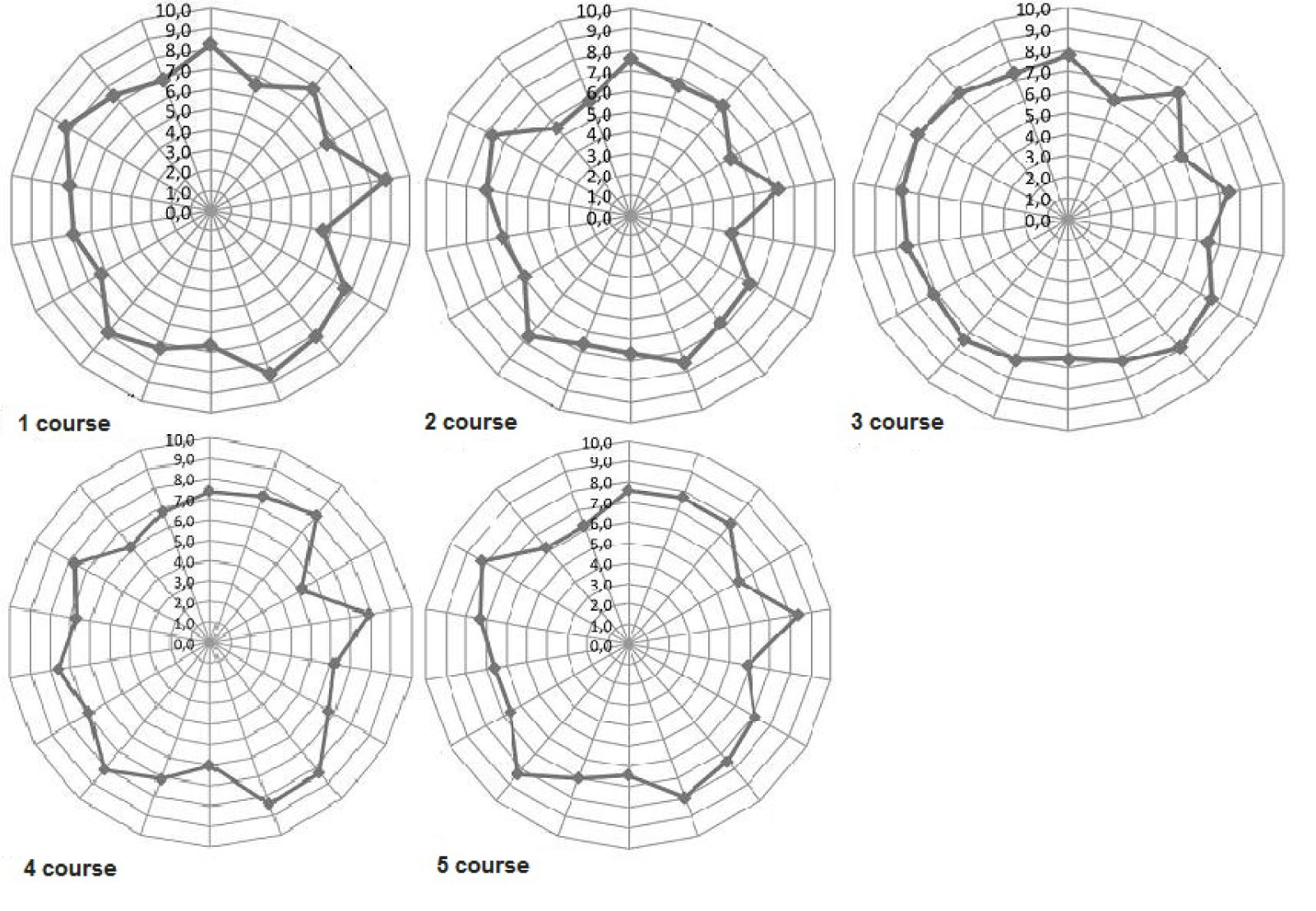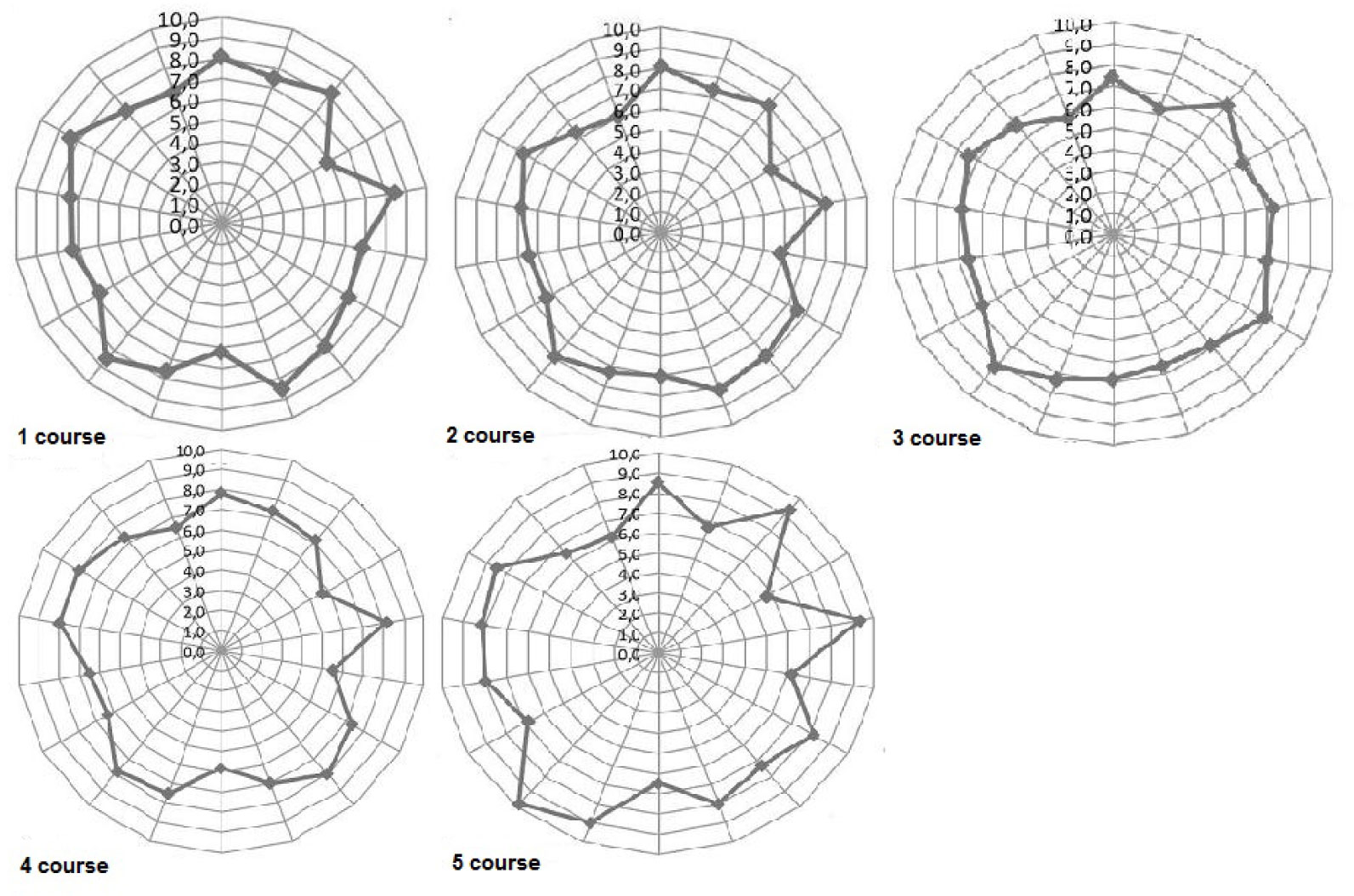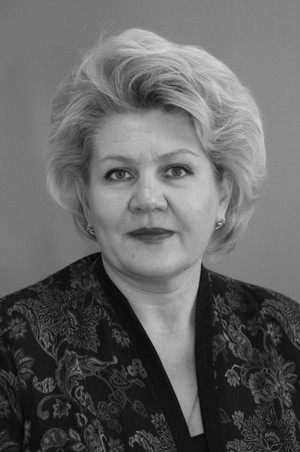Comparative Analysis of Gender Specifics of Changes in Creativity of Sports Faculty Students within University Educational Environment
Фотографии:
ˑ:
V.D. Povzun, professor, Dr.Hab.
A.A. Povzun, V.V. Apokin, O.V. Bulgakova, associate professors, Ph.D.'s
Surgut State University, Surgut
Key words: creative potential, self-assessment, gender preferences, educational environment.
The newly-emerging model of social development is now setting absolutely new goals both for society and for higher education, hence it is a fair to speak about the need for development of new creative pedagogics based on the philosophy of creativity and focused on the solution of fundamental social and educational problems, which would enable to change from the principle "Education for a lifetime" to the principle "Education throughout life". This objective may be fully applied to sports education, so mobilization of creativity of a trainer with a pronounced pro-active position and capable of adapting quickly to ever-changing living conditions is one of the major priorities in training of highly qualified athletes. In order to achieve this objective we need to reconsider the ethical and cultural aspects of education and, consequently, find the new approach to evaluation of an individual's creativity, since nowadays there is a large variety of theoretical definitions of creative activity, as well as of the concepts of "creative work", "creativity", and "creative thinking" [2, 3, 1, 4, 9]. We assume that the main effort of every person, and thus the source of his/her life satisfaction and development, is the drive for self-worth, which reflects in the way a person controls his/her vital activity and specific creative activity [10]. Therefore, our approach to understanding creative work will involve the concept "significance" and, as a result, we will consider creative potential as a "self-worth drive", "cultivation of self-worth", which emphasizes the main idea, namely, a person's striving for self-worth [5].
When studying the role of the university educational environment in development of this particular type of creative potential (CP) of the sports faculty students, we have already mentioned that this work will be a success in case of the original state of CP being taken into account, and we have pointed out that this condition is specific and is characterized by big claims to creative abilities rather than by their occurrence [5], and the time pattern shows that the total profile of students’ creative potential does not change significantly within five years of study. Moreover, this pattern is not limited to the sports faculty [6], which means that today's university as an educational institution and university education itself are not of primary importance in development of creative potential and creative qualities of young people. And if the university finds it necessary to influence the development of CP of its students, then its primary goal is to seek some adequate ways to provide such an influence, as the changes in the priority of psychological qualities during the students' self-assessment of own CP are in process, though, in our opinion, they reflect the attempts to maintain the originally developed status quo rather than the development or improvement of CP [7].
Since the course and inter-faculty analysis of self-assessment of creativity did not show any stable dynamics, we decided to try and look for its gender diversity in the sports faculty students. We have already tried to evaluate the result of the integrated influence of modern society on gender preferences of modern young people, i.e. determine which qualities modern young people consider to be crucial for their gender-based achievements [8], and also estimate the success rate of this claim, so we understand that consideration of gender-role stereotypes of each generation, especially their development in a society-agreeable direction, becomes an important social task, and educational institutions play, if not the key, but far from a small part in this process. In order to settle this problem, first and foremost, it is necessary to understand its actual state.
The purpose of the study was to assess the dynamics of development of creativity on the basis of gender analysis of self-assessment of value orientations of students of the Faculty of Physical Culture of Surgut State University.
Materials and methods. Like before, the researchers used the method of self-assessment as an approach to estimation of this condition, and the test of evaluation of the personal creative potential by Sharov as a criterion of the students' opinion on the level of their creative abilities [11]. The 10-point scale of self-esteem of 18 personality traits or the frequency of their manifestation used in the test characterizes the level of development of creativity. Based on the number of points of each student in the course of the survey the level of students' self-assessment of their creative abilities was determined and creativity profiles were allocated for each course. Furthermore, the technique helped to identify priority personality traits that reflect the level of development of athletes' creativity and determine the creative personality type individually, according to the top level of development of relevant quality.
The study was conducted during the 2011/12 academic years in all courses of study and involved 257 male and female students of the Faculty of Physical Culture aged 18-23 years. Thanks to such coverage, not only the current and somewhat tentative conclusions about the state of development of students' creativity were drawn, but also a probabilistic forecast of its development in the future was made.
Results and discussion. The obtained results of self-assessment of own creative abilities by male and female students are represented in Table 1.
Table 1. Gender differences in the distribution of levels of self-assessment of personal creative potential of 1-5-year students of Faculty of Physical Culture, %
|
Self-assessment level |
1 course |
2 course |
3 course |
4 course |
5 course |
|||||
|
M |
F |
M |
F |
M |
F |
M |
F |
M |
F |
|
|
Inadequately low |
– |
– |
– |
– |
– |
– |
– |
– |
– |
– |
|
Low |
– |
– |
– |
– |
– |
– |
– |
– |
– |
– |
|
Below average |
– |
– |
– |
– |
– |
– |
– |
– |
– |
– |
|
Average |
19 |
8 |
32 |
19 |
15 |
14 |
– |
12 |
10 |
– |
|
Above average |
35 |
23 |
38 |
36 |
23 |
43 |
38 |
25 |
30 |
34 |
|
High |
31 |
38 |
30 |
36 |
31 |
14 |
62 |
51 |
60 |
36 |
|
Very high |
15 |
31 |
– |
9 |
31 |
29 |
– |
12 |
– |
30 |
|
Inadequately high |
– |
– |
– |
– |
– |
– |
– |
– |
– |
– |
For clarity, basing on the self-assessment results, we created the profile of creative qualities of students of each course and gender in particular. The results are represented in Fig. 1 and 2. Such graphical interpretation of the results allows getting a holistic picture of the structure of creativity and its changes with time.
First, it should be mentioned that this pattern does not differ significantly from the data obtained earlier [5, 6]. The self-assessment level (Table 1) remains permanently high, which is certainly a good sign, and gender differences are more quantitative rather than of qualitative. We would like to emphasize that a higher level of self-assessment of creative potential is observed and maintained in the females, which must be due to the modern level of feminization, and it undoubtedly should be taken into account during the university everyday practice. It is fair to say that today's females are much more socially active, so of special interest is the recent result we got when analyzing self-assessment of gender specifics of interpersonal communication [8], that illustrates that most indicators are far from effective self-assessment, and generally we observe self-depreciation. However, self-assessment of creative potential is high! It follows that young people, and especially females, are to a much greater extent focused on their social activity and social success, not seeing any prospects and, consequently, ignoring the interpersonal communication perspectives. There are different reasons for this, which should be taken into special account while organizing educational and extra-curricular work at the university.

Fig. 1. Creative potential profile of 1-5-year students of Faculty of Physical Culture of Surgut State University (males)

Fig. 2. Creative potential profile of 1-5-year students of Faculty of Physical Culture of Surgut State University (females)
Unfortunately, there is no clear answer to the question if this high level of creative self-assessment is the reflection of the actual creative status of one of the genders, or, as we observed earlier, is simply a claim to it. We can estimate that by the creative potential profile, which "smoothed" form can indicate an inadequately high level of self-assessment [5, 6]. And such intensification of "smoothness" is registered in the profiles of males and females during the first 3 years of study. If opposed, these profiles are very similar, and get almost rounded at the 3rd course. There is no doubt that during this period students undergo a crisis of creative self-assessment, but nevertheless they steadily demonstrate a big claim to it. This can be explained by the fact that students who are focused mostly on achievement of sports results have other areas to realize their creative abilities, as "self-worth drives", however, conflicts with the society, which has a different vision of a personality, its abilities, capabilities and value to society, are common within the educational community. And in this context, the university has not just the chance but also the need for organization of the goal-oriented work, which is aimed at altering creative potential, adapting it to challenges of modern society, rather than at its development, and, as a result, relieving the tension between a personality and the society. In the current gender interpretation the time pattern shows that the total profile, though in a minor way, but is changing, and this change has some laws and distinctions. There is a turning point after the 3rd course, and the process starts to develop in reverse order, although, it is not similar among males and females.
For the females whose claims to social success, as we have already mentioned, is slightly bigger, the profile pattern gets much more preferable by the 5th course, as in spite of the persistently high self-assessment there arise evident peaks that represent psychological qualities determining and reinforcing self-assessment. As a result, by the graduation, females make up their mind not just about the level of self-assessment of their creative potential but also about the ways how to achieve it. The profile pattern for males reverts to the pattern of the 1st course, consequently, their claims to high self-assessment remain hardly proved. Moreover, if compared to the 1st course the level of self-assessment decreases significantly.
The reason for such pace of development, and consequently, the solution approach can be understood to a certain degree by looking closer at the changes in the priority of psychological qualities that enable realization of creative potential, which we are about to do in the near future.
Conclusion. There are extensive resources within the university educational environment that facilitate influencing the development of a student's adequate self-assessment of own personality, including the evaluation of the level of development of his/her creative potential, however, yet most of them are not used effectively or to the full.
References
- Altshuller, G.S. Psychology of inventive creativity / G.S. Altshuller, R.B. Shapiro // Voprosy psikhologii. – 1956. – № 6. – P. 37–49. (In Russian)
- Anan'ev, B.G. Man as an object of cognition / B.G. Anan'ev. – St. Petersburg: Piter, 2001. – 288 P. (In Russian)
- Vygotsky, L.S. On psychology of actor's creativity. P. 2 / L.S. Vygotsky // Collected works. – Мoscow, 1984. – P. 321. (In Russian)
- Druzhinin V.N. Psychology of general abilities / V.N. Druzhinin. – St. Petersburg: Piter, 2002. – P. 166. (In Russian)
- Povzun, V.D. Resources of the university educational environment in development of creativity of students of sports faculty / V.D. Povzun, A.A. Povzun, V.V. Apokin // Teoriya i praktika fizicheskoy kultury. – 2013 – № 1 – P. 94–95. (In Russian)
- Povzun, V.D. Comparative analysis and the ways of development of creative potential of students of sports faculty in the university educational environment / V.D. Povzun, A.A. Povzun, V.V. Apokin // Teoriya i praktika fizicheskoy kultury. – 2013 – № 7 – P. 85–88. (In Russian)
- Povzun, V.D. Psychological characteristics of student's creative potential and their changes in the university educational environment / V.D. Povzun, A.A. Povzun, V.V. Apokin, N.L. Ivanova // Teoriya i praktika fizicheskoy kultury. – 2013 – № 9 – P. 83–86. (In Russian)
- Povzun, A.A. Estimation of sex-role socialization of students of the faculty of physical education on the basis of introspection of their gender preference / A.A. Povzun,V.V. Apokin, Yu.A. Mulyukina // Teoriya i praktika fizicheskoy kultury. – 2012 – № 2 – P. 85–87. (In Russian)
- Sal'nikov, V.A. Talent, endowments and abilities in the structure of sports activity / V.A. Sal'nikov // Teoriya i praktika fizicheskoy kultury, 2002. – № 4. – P. 16-20. (In Russian)
- Sharov, A.S. Psychology of human cognition / A.S. Sharov. – Omsk: Pub. h-se of OmSPU, 1994. – 130 P. (In Russian)
- Sharov, A.S. System of value orientations as a psychological mechanism of regulation of human life: doctoral thesis (Psych.). - Novosibirsk, 2000. – 383 P. (In Russian)
Corresponding author: apokin_vv@mail.ru




 Журнал "THEORY AND PRACTICE
Журнал "THEORY AND PRACTICE